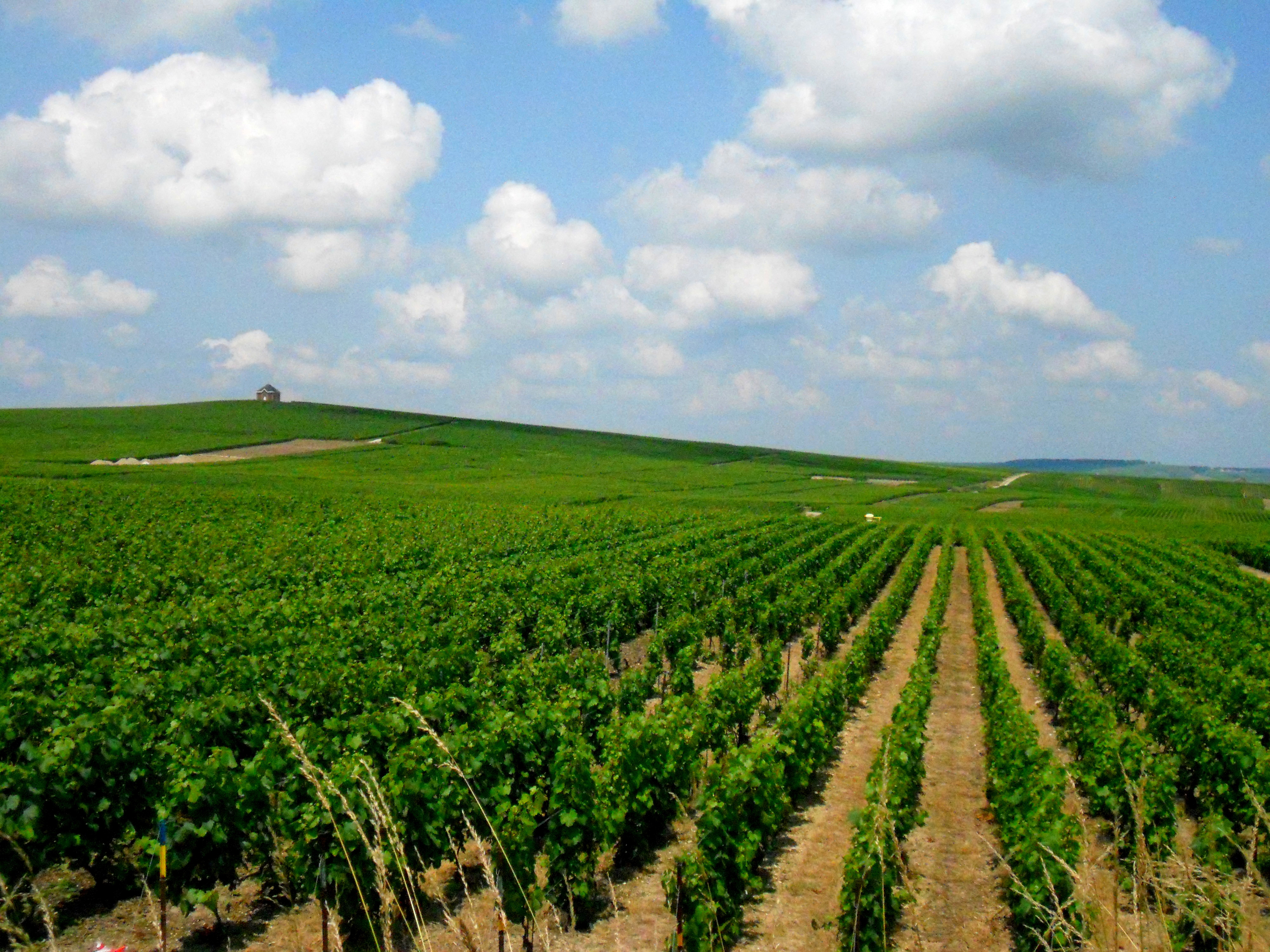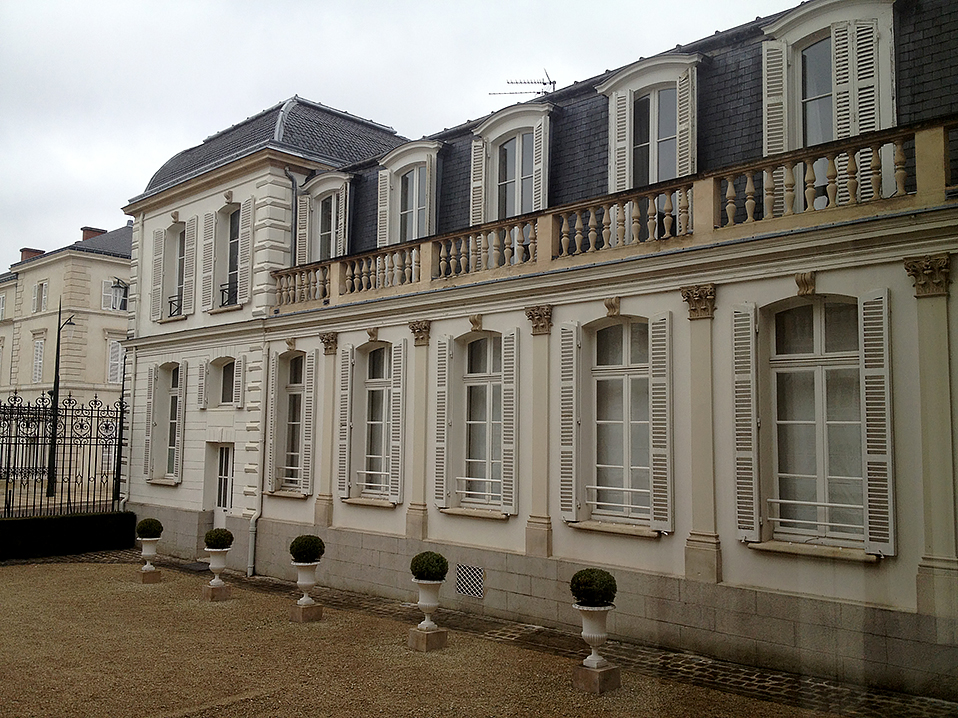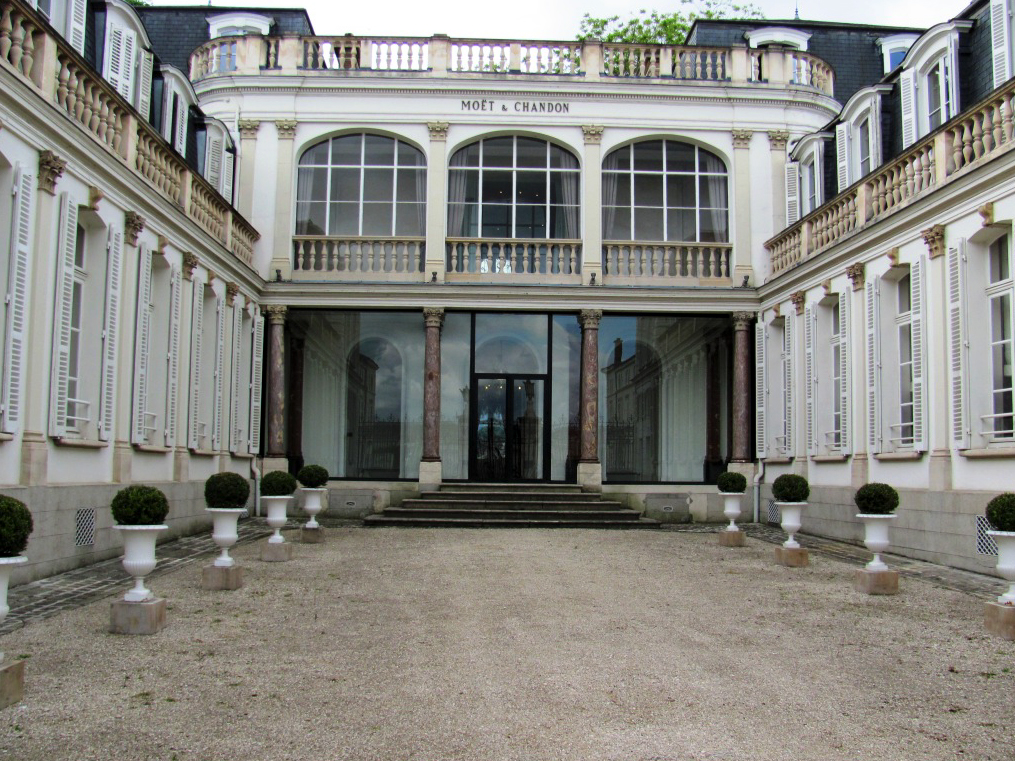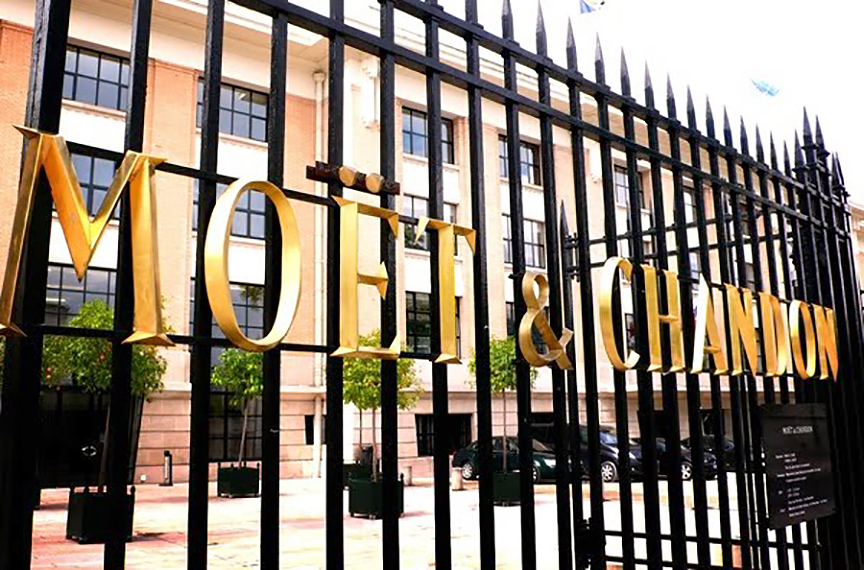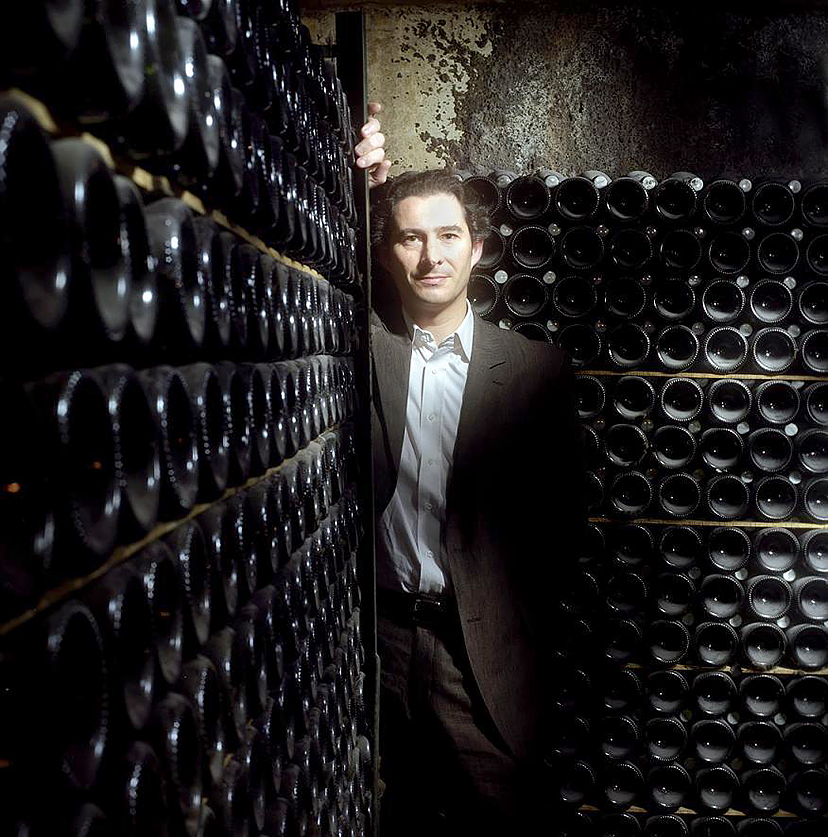Deep gold color with touches of green; apple, lemon, citrus, brioche, flowers on the nose; green apple, peach, pear, citrus, freshly baked bread, almond chip on the palate.
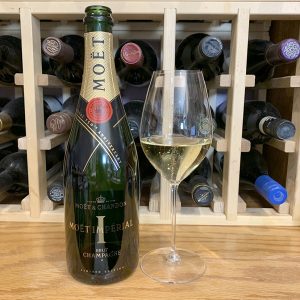
Brut; very fine bubbles; vivid acidity and tartness. Released in 2019, the 150th year of Imperial production. This is blend of more than 100 different wines, 20-30% reserve wines to enhance complexity and constancy. The body is 20-30% pinot noir, 30-40% pinot meunier, and 20-30% chardonnay. Matured in the cellar two years. Aged three months minimum after disgorgement; 12% ABV.
Moët & Chandon Moët Imperial Brut Champagne continues to set the standard for very high volume sparkling production. It is the biggest selling Champagne brand in the world—selling close to 30 million bottles annually. Balanced with some complexity. Rich, clean, fresh, very tart and lively. Minerality. Robustly continuous bubbles. Medium-full body. Medium finish.
The Moët & Chandon name traces its roots to 1743 and founder Claude Moët. At that time, Champagne, the northernmost wine region in Europe, was something of a backwater, and the wine considered inferior. Only later did it become the internationally recognized symbol of luxury, quality, and indulgence.
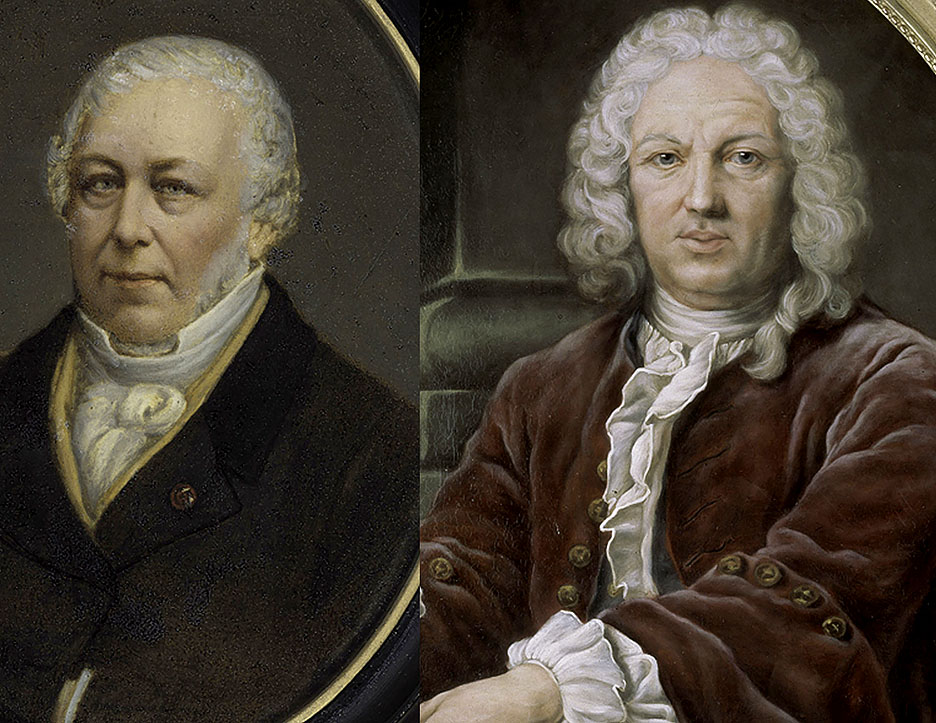
Significant credit for the transformation from backwater to prominence goes to Claude Moët’s grandson, Jean-Remy Moët, who marketed Champagne to the world at the end of the 1700s. Moët’s website asserts: “The important figures of the era, from the Marquise de Pompadour to Talleyrand to Napoleon quickly fell in love with the House’s effervescent wine. Moët & Chandon was soon the icon of success and elegance that it remains to this day.”
The Marquise de Pompadour, mistress of King Louis XV, was a highly influential tastemaker. Her famous quote: “Champagne is the only wine in the world that makes every woman beautiful” refers to Moët’s bubbly. Napoleon visited the House several times and awarded Jean-Remy the Légion d’honneur, one of France’s highest honors. Legends claim Napoleonic troops invented the tradition of using a saber to open bottles of Moët to celebrate victory.
As you might expect, Moët & Chandon takes pains to preserve and tout its association with success and prestige. Nothing wrong with that when you can back it up with 277 years of quality. Today, Moët & Chandon is the largest estate in Champagne with 2,840 acres of parcels on rich chalk soil; half are grand crus and one-quarter are premier crus. The parcels are scattered among the five main areas of Champagne: Montagne de Reims, Côte des Blancs, Vallée de la Marne, Sézanne, and Aube. The chef de cave (maker of the wine) is Benoît Gouez. The wines age—more than five years in this case—in their massive caves underneath Épernay.
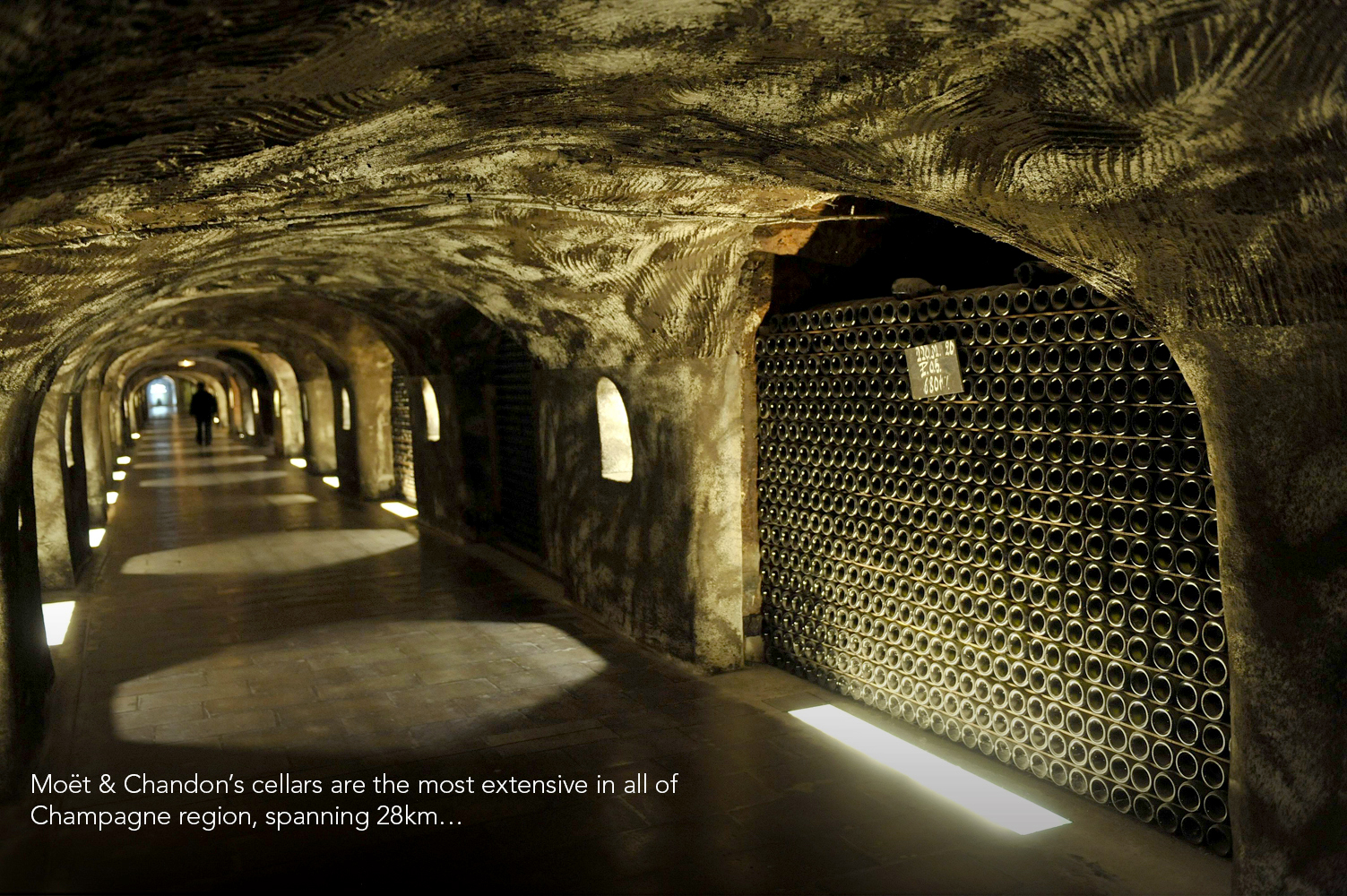
Moët & Chandon Moët Imperial Brut Champagne NV is consistently classic Champagne. Consistent in that it hits this flavor profile year after year with mammoth production. Quite a feat. Moët Imperial pretty much defines this space in the bubbly wine world. An iconic wine for 150 years. Pair with scallops, oysters, sushi, white fish; white meats—chicken and pork; white fruits such a tart of white peaches and a light, white chocolate cream. Works as an aperitif and toasting wine at special event, too. $40-50
